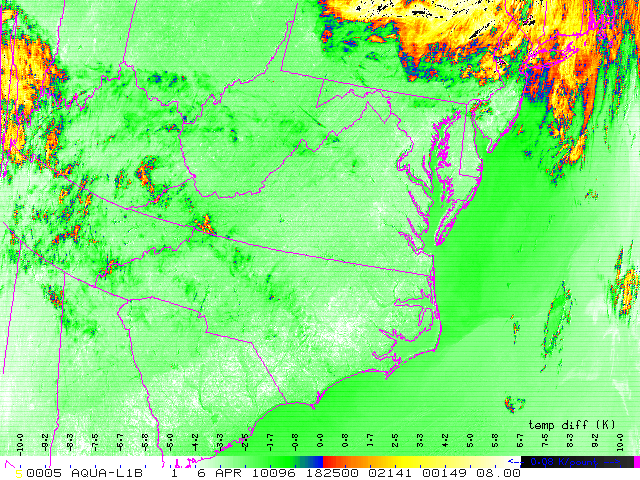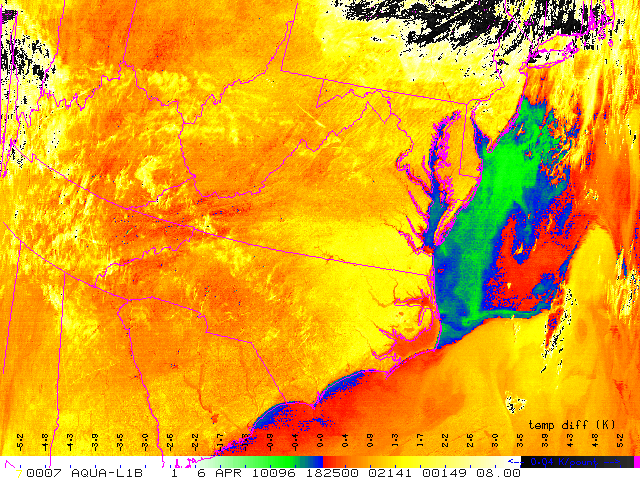MODIS Longwave channel difference of Gulf Stream and Labrador currents
Jeff Braun and Louie Grasso
Figures 1-4 show Modis images at 3.9, 8.53, 11.02, and 12.03 µm, respectively at 1825 UTC on 6 April 2010. Off the east coast of the United States, two ocean currents are evident in the imagery: The cool, southward flowing, Labrador current and the warm, northerly flowing, Gulf Stream. All of the first four figures shows the clear boundary between these two currents.
Figure 1: Modis 3.9 µm, 6 April 2010, 1825 UTC.
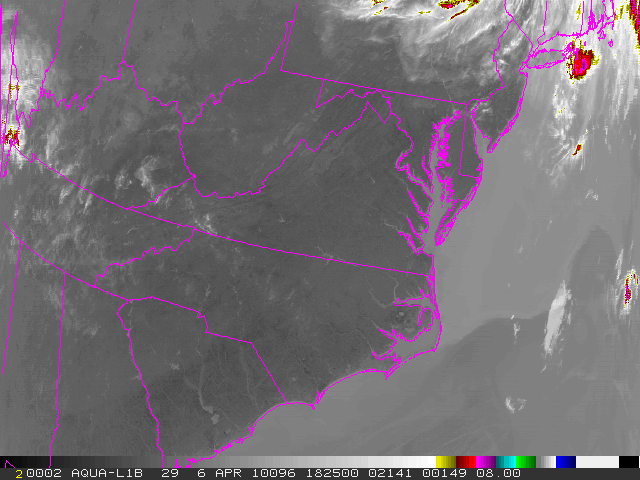 Figure 2: Modis 8.53 µm, 6 April 2010, 1825 UTC.
Figure 2: Modis 8.53 µm, 6 April 2010, 1825 UTC. 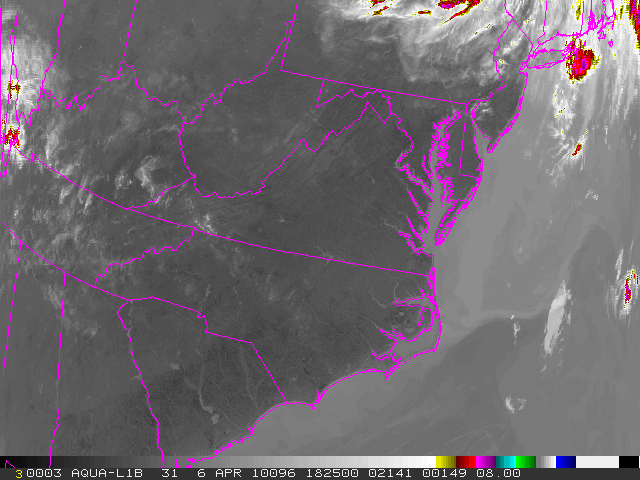 Figure 3: Modis 11.02 µm, 6 April 2010, 1825 UTC.
Figure 3: Modis 11.02 µm, 6 April 2010, 1825 UTC.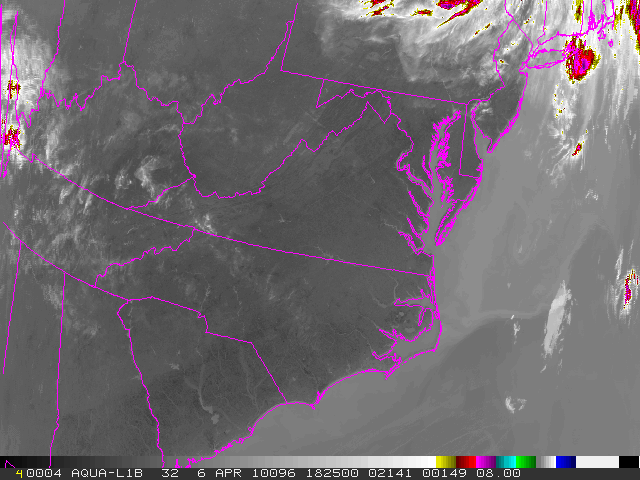
Figure 4: Modis 12.03 µm, 6 April 2010, 1825 UTC.
Figures 5-7 show the brightness temperature 8.53-11.02, 8.53-12.03, and 11.02-12.03 difference, respectively. As seen in Figures 5 and 6, small variations in color existed between the two ocean currents. In particular, the sign of the difference is the same for both currents: negative. However, a different picture emerged in Figure 7. More detail is evident in this channel difference compared to the previous two. This may be a result of the larger range of values in Figures 5 and 6. Nevertheless, the sign of the difference in Figure 7 does change. Noticeable variations exists between the two currents, within the Labrador current, along the Carolina coast line, and between the waters east and west of the Outer Banks of North Carolina.
Figure 5: Modis 8.53-11.02 µm, 6 April 2010, 1825 UTC.
Figure 6: Modis 8.53-12.03 µm, 6 April 2010, 1825 UTC.
Figure 7: Modis 11.02-12.03 µm, 6 April 2010, 1825 UTC.
What information is contained in the variation seen in Figure 7? In particular, what does the change of sign within the Labrador current imply? What does the change of sign say about the waters east and west of the Outer Banks? Give us your comments and best answers if you’d like.


